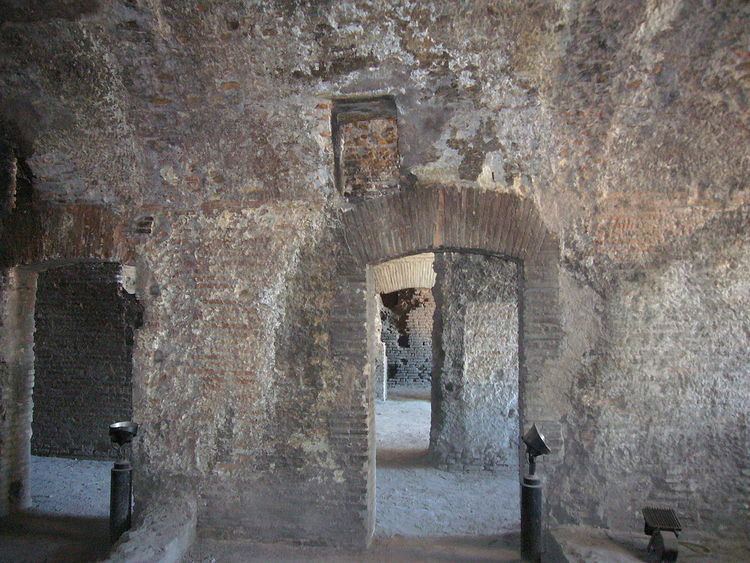Built in 2nd century AD Phone +39 06 0608 | Type of structure residential estate | |
 | ||
Location Regione VIII Forum Romanum [1] Address Piazza d'Aracoeli, 00186 Roma, Italy Similar Basilica of Santa Maria in, Temple of Caesar, Curia Julia, Basilica Julia, Arcus Argentariorum | ||
The Insula Romana (literally "Roman island", meaning "Roman block") is a building dating back to the 2nd century AD, set in Via del Teatro di Marcello in Rome (Italy), at the base of the Capitoline Hill and close to the Basilica of Santa Maria in Aracoeli.
Contents
History
The building, formerly five floors high, dates back to the 2nd century and is a quite accurate testimony of the extensive city planning in Rome during the imperial age, as well as similar examples in Ostia Antica.
During Middle Ages, the little church of San Biagio del Mercato was established in the higher part of the building ("mercato" means "market" in Italian: in fact on this slope of the Capitoline Hill an open-air market took place till the 15th century).
On the medieval church another church, dedicated to Saint Rita of Cascia, was built in 1653 (under the pontificate of Pope Alexander VII Chigi, architect Carlo Fontana): it was dismantled in the 1930s, during the works of adaptation of the Vittoriano, and rebuilt not far, at the corner with Via Montanara, in 1937-40. Its demolition revealed the underlying Roman building, that was preserved (unlike many other buildings in the area).
Of the medieval oratory only the tower bell and a frescoed apse still survive; the main scene of the fresco depicts Christ's burial, with Mary and St. John. All the structures, included the tower bell, have very small sizes.
The "insula" was discovered between 1931 and 1942, during the works for the "isolation" of the Capitoline Hill.
Description
The discovery of the insula allowed to define more precisely the estate tipology in ancient Rome, and in particular the characteristics of the insulae, made by a building with many floors in which several real estates, mainly for residential use, can be recognized. These dwelling were used directly by Roman population and maybe leased by rich lairds. It is therefore one of the very first kinds of building with distributed ownership, an ancestor of modern condominium and a complete example of the compresence of direct housing function and the income one.
The insula romana was a stonework building (other kinds of insulae were made with wood) and probably had six floors, but only four, including the mezzanine, have been recovered: they are well preserved but the last one, of which only traces remain. As many coeval buildings of this kind, at the ground floor it houses some tabernae, little rooms facing a courtyard and protected by a portico, probably used as shops or stores.
The higher floors house the dwellings, designed for lease. They show a wooden-board flooring and the provision for rectangular windows with wooden lockings. Some characteristics of the positioning of the rooms, that become smaller and smaller in the upper floors, probably point out different values between the dwellings in the different levels, that is the higher dwellings probably had lower value and were therefore designed for poorer users, while the dwellings at the lower floors were more appreciated and designed for wealthy people. This hypothesis is supported by both the greater stuffiness in reaching the higher floors through the ladders, and the greater dangerousness resulting from the frequency of fires and collapses. All along the depth of the building, the ambiances only take light by windows in the direction of the street: at the second floor, traces of a balcony can still be observed.
It has been evaluated that the insula romana could host around 380 people.
The "insula" plainly shows that, very close to the monumental area of imperial Rome, at the footsteps of the most important and sacred hill of the town, the "normal" citizens, the plebeians lived, although in an uncomfortable state.
